Verona - City of Love
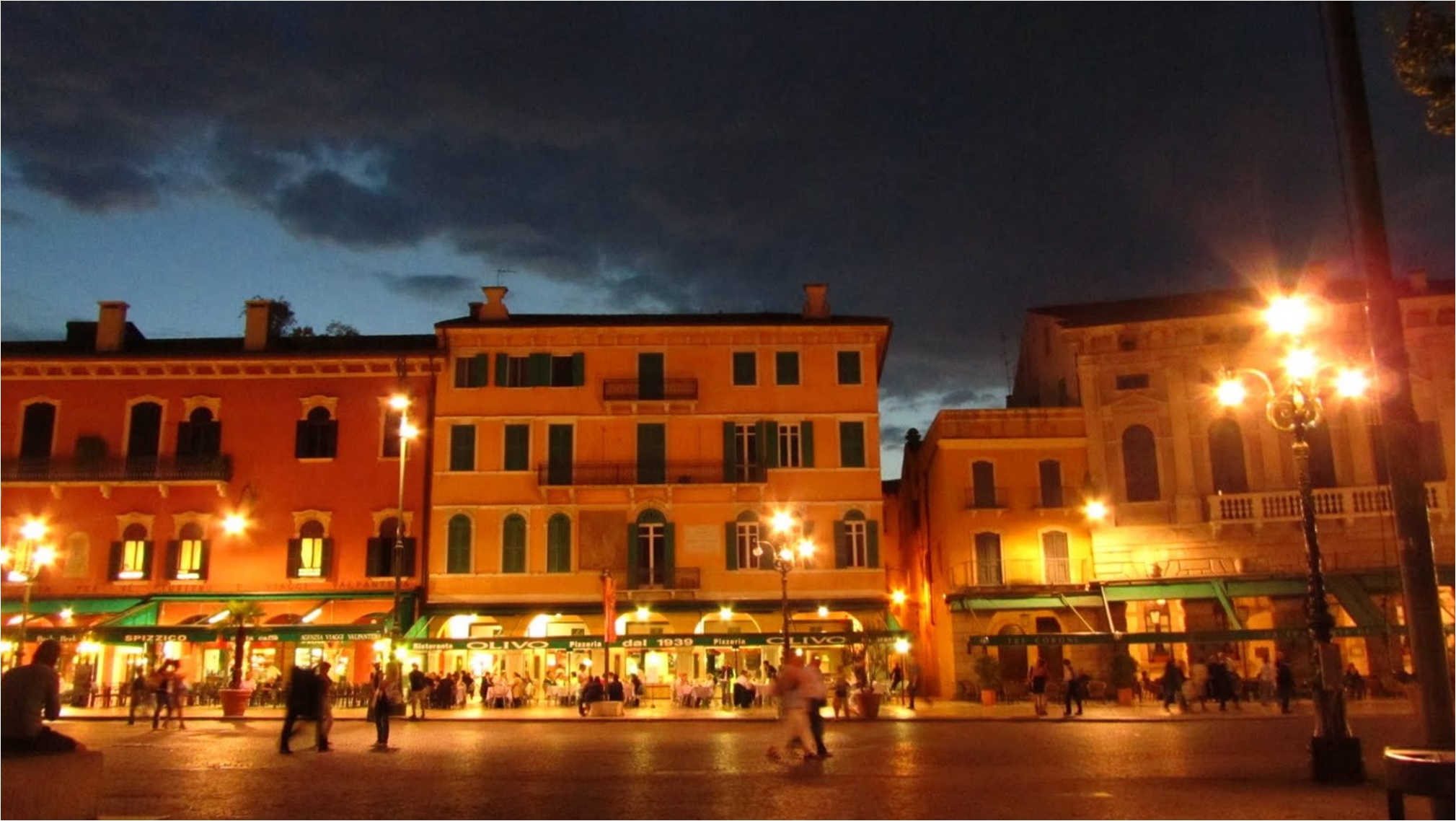

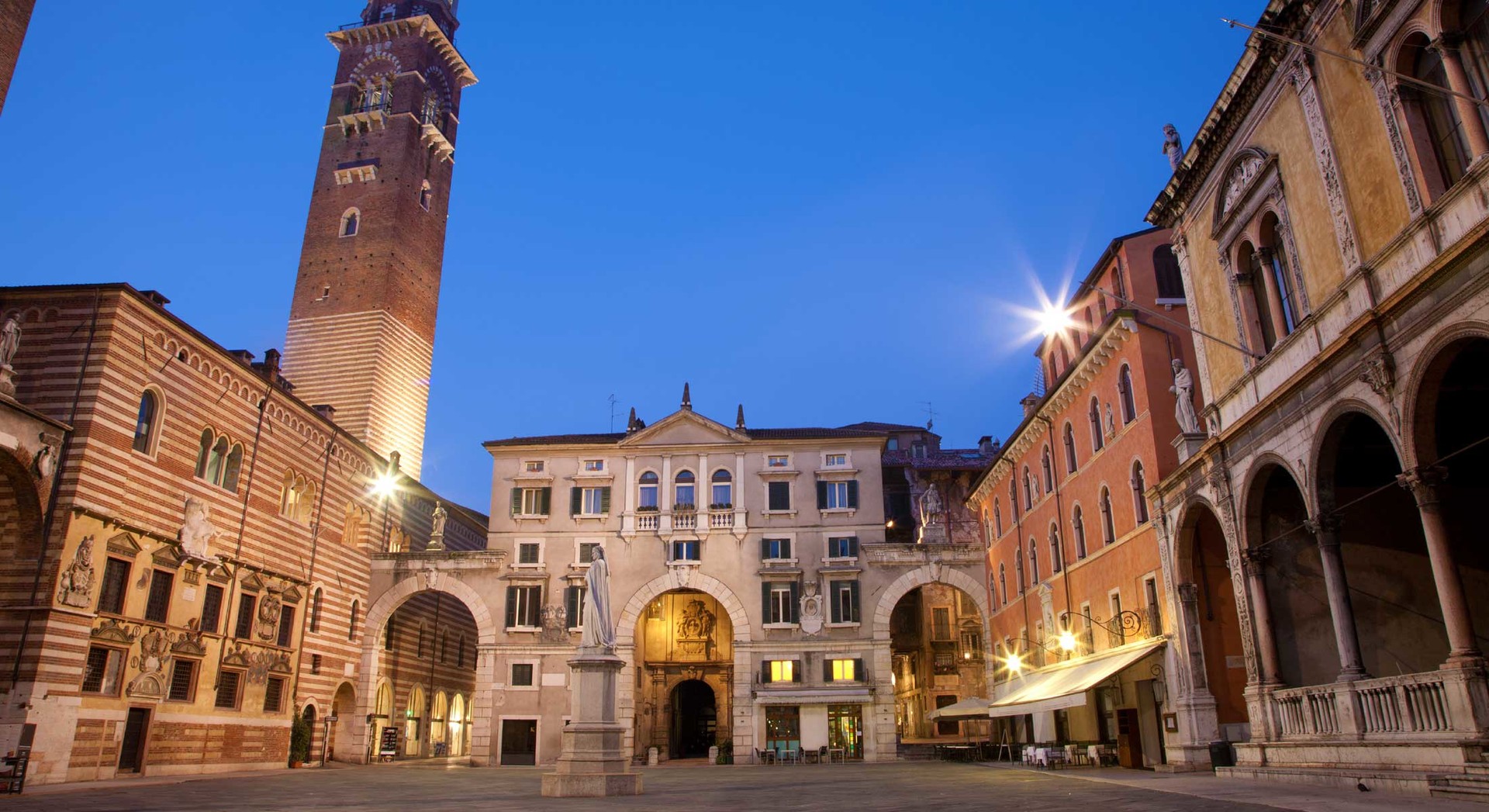
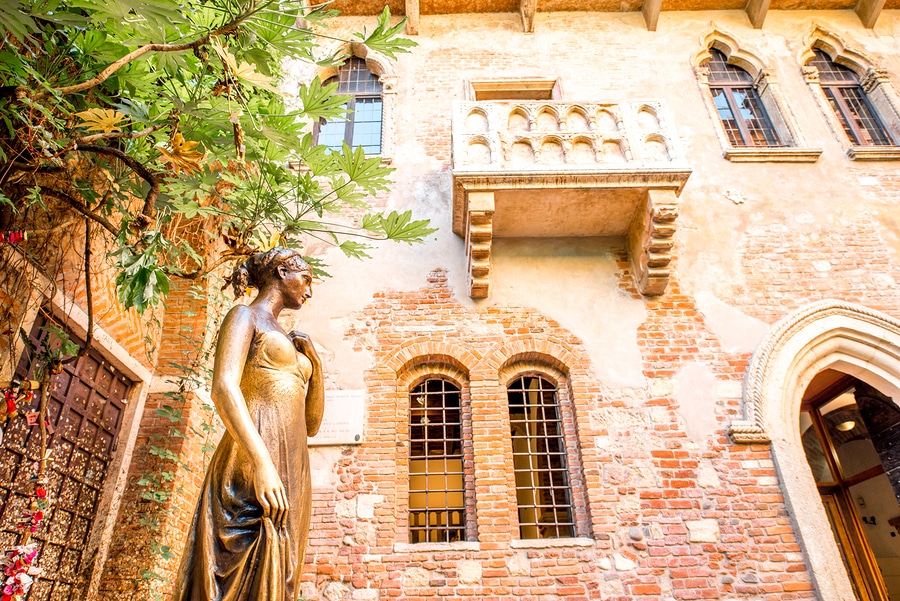


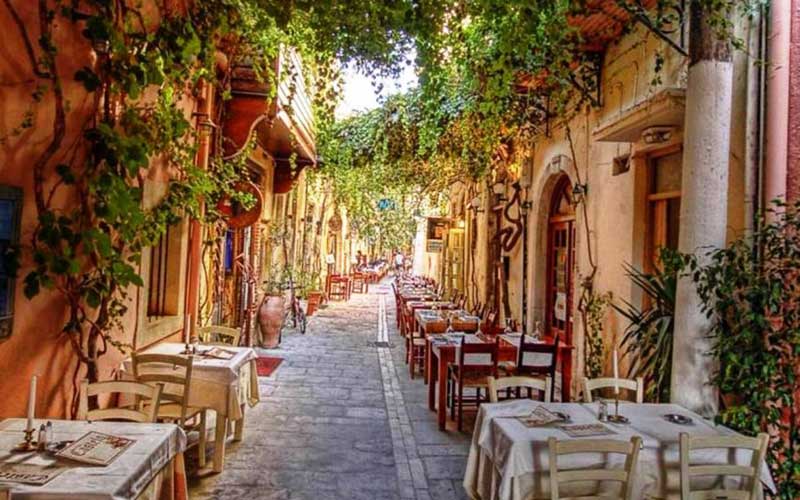

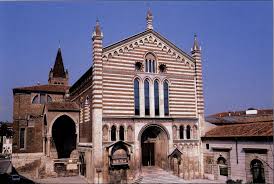
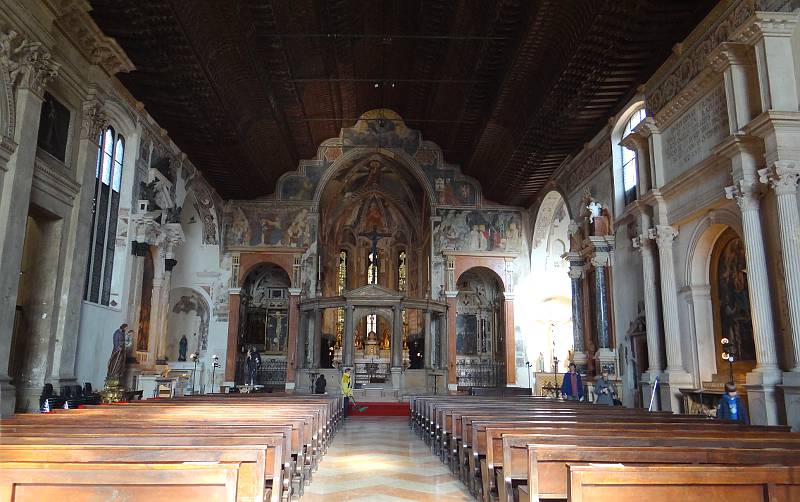
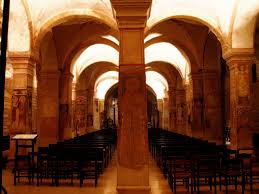
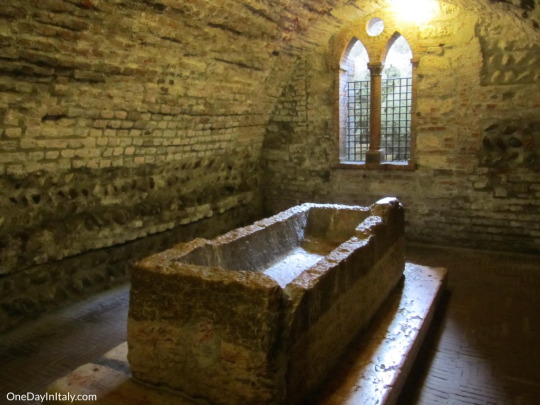

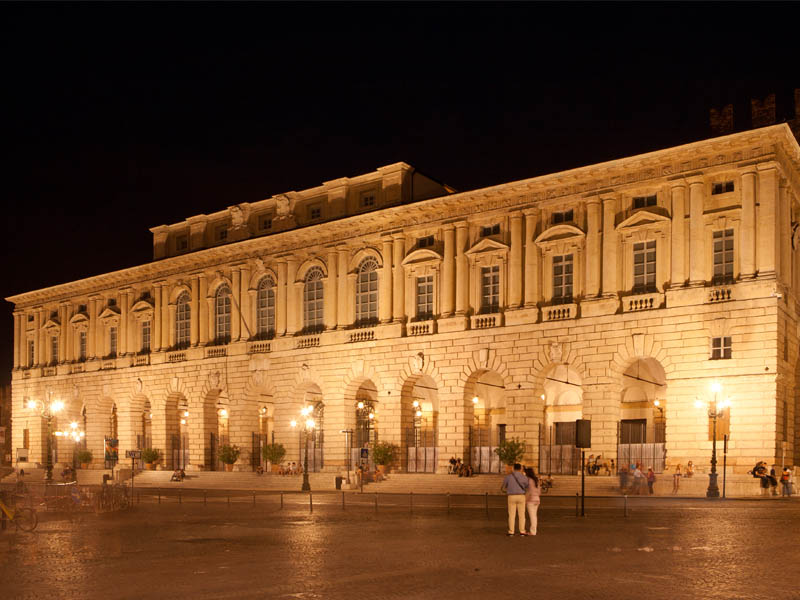
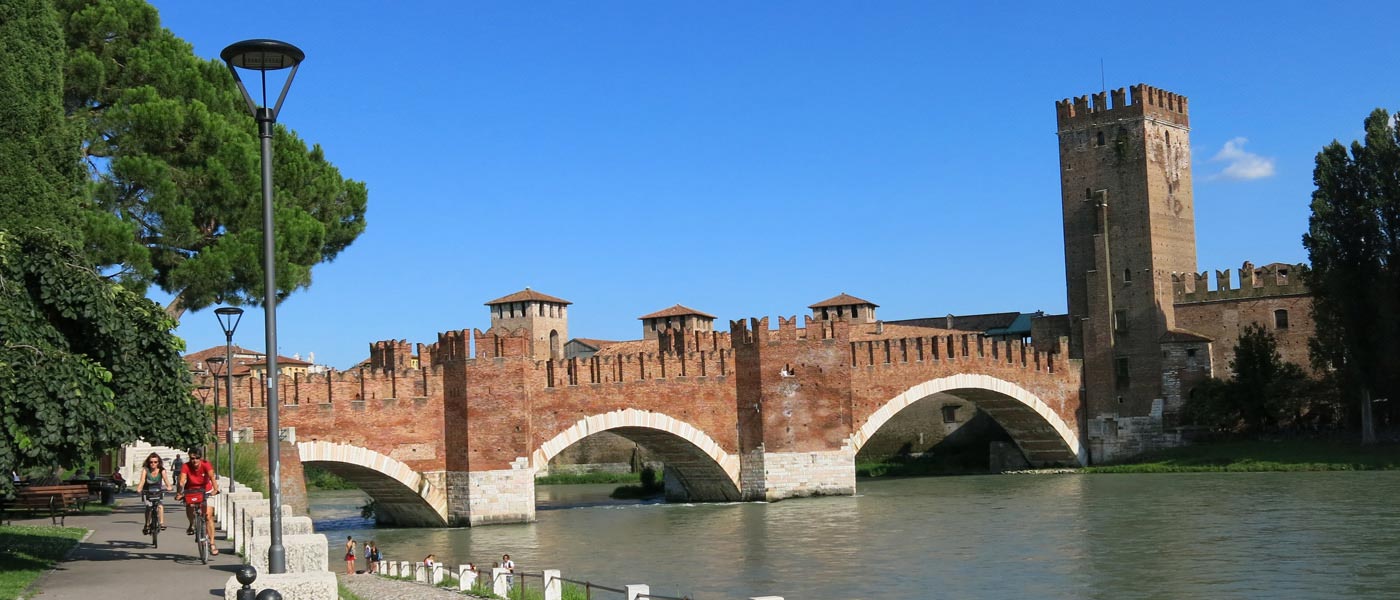


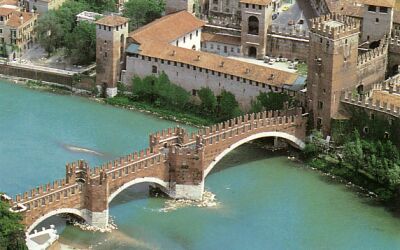
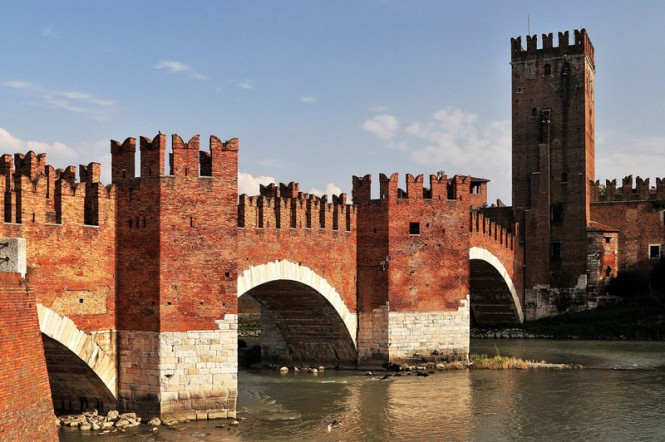
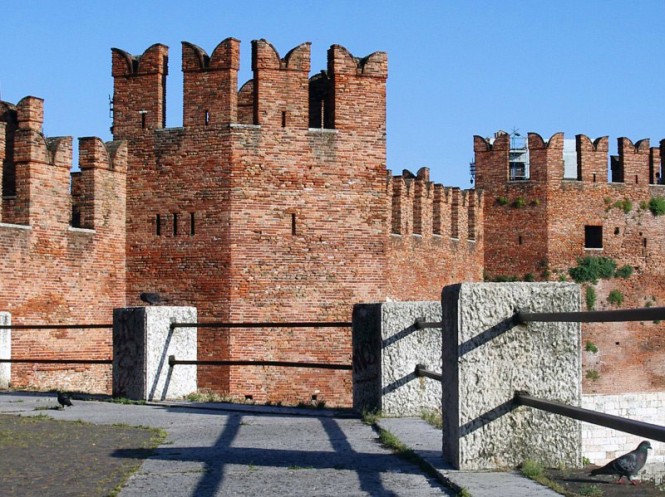
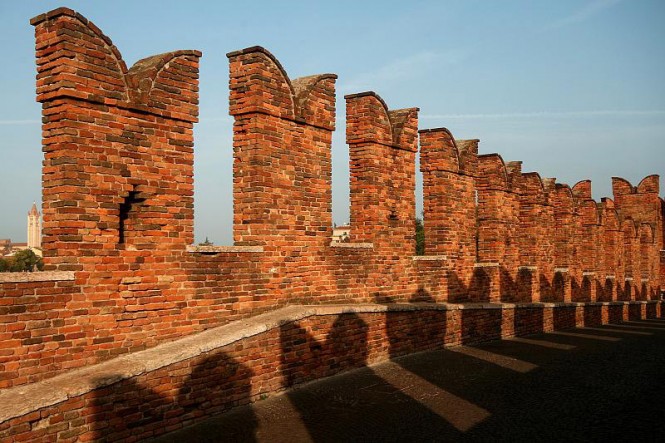
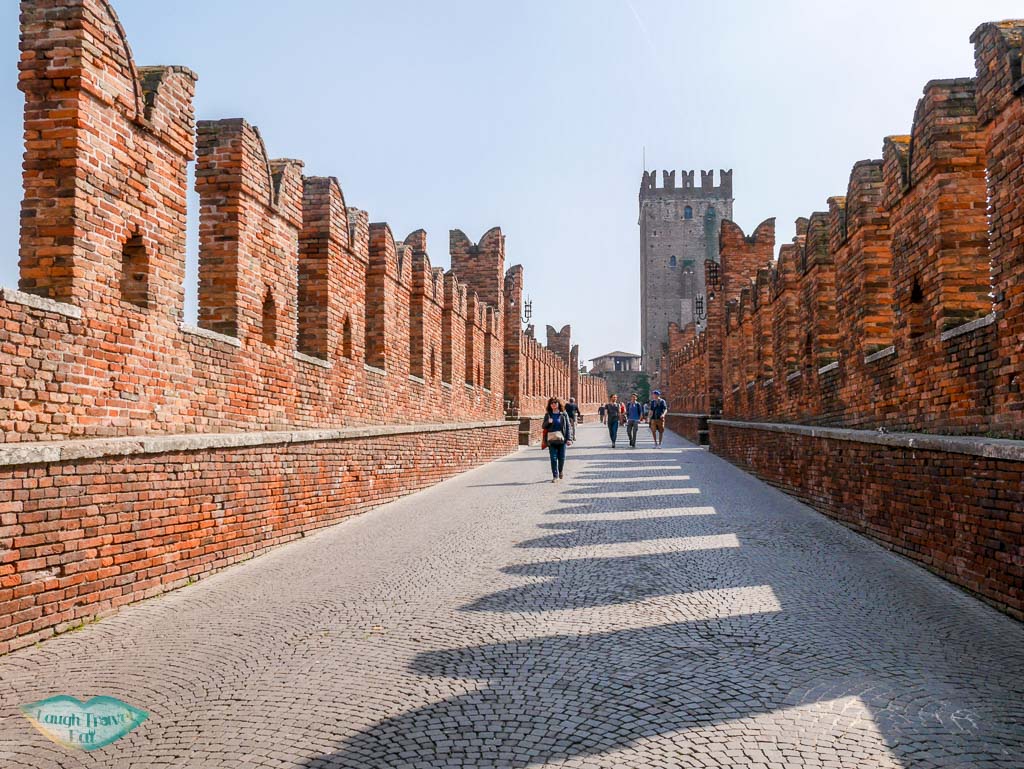
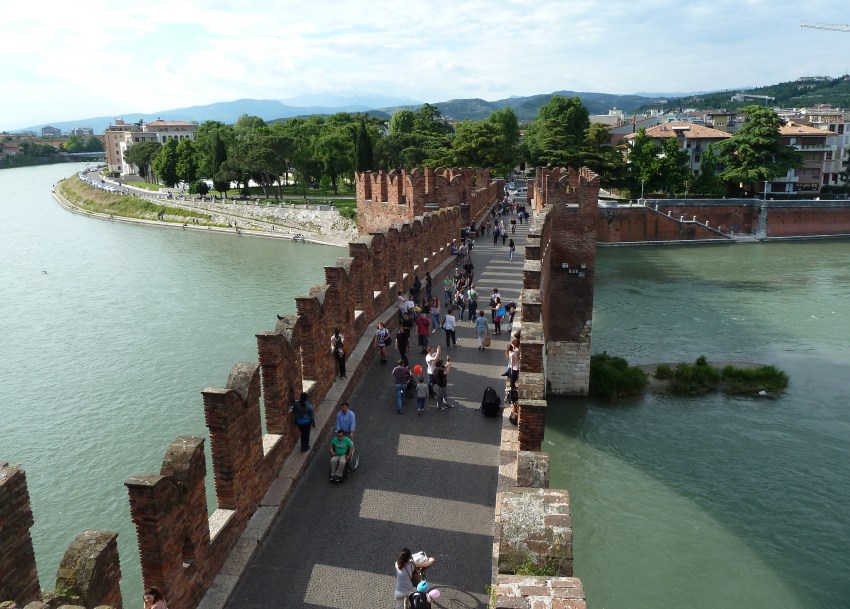


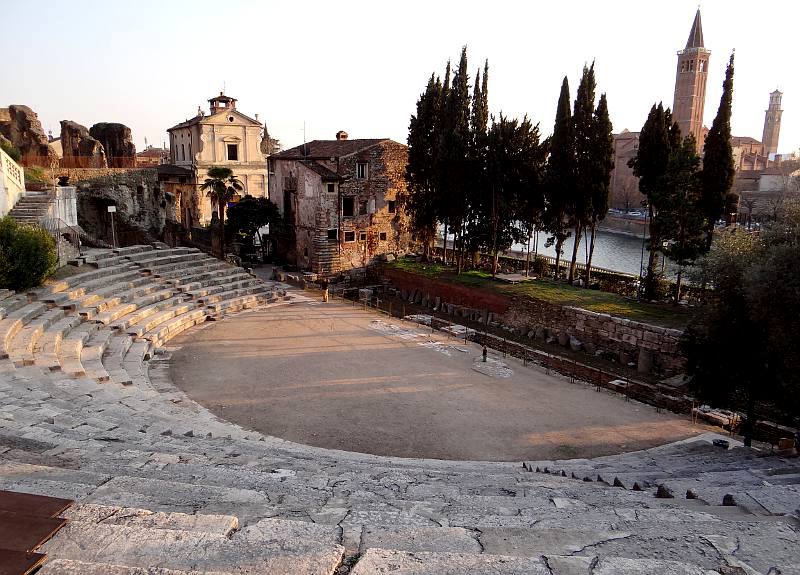
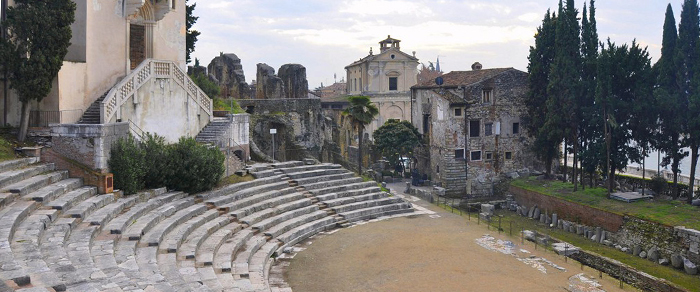

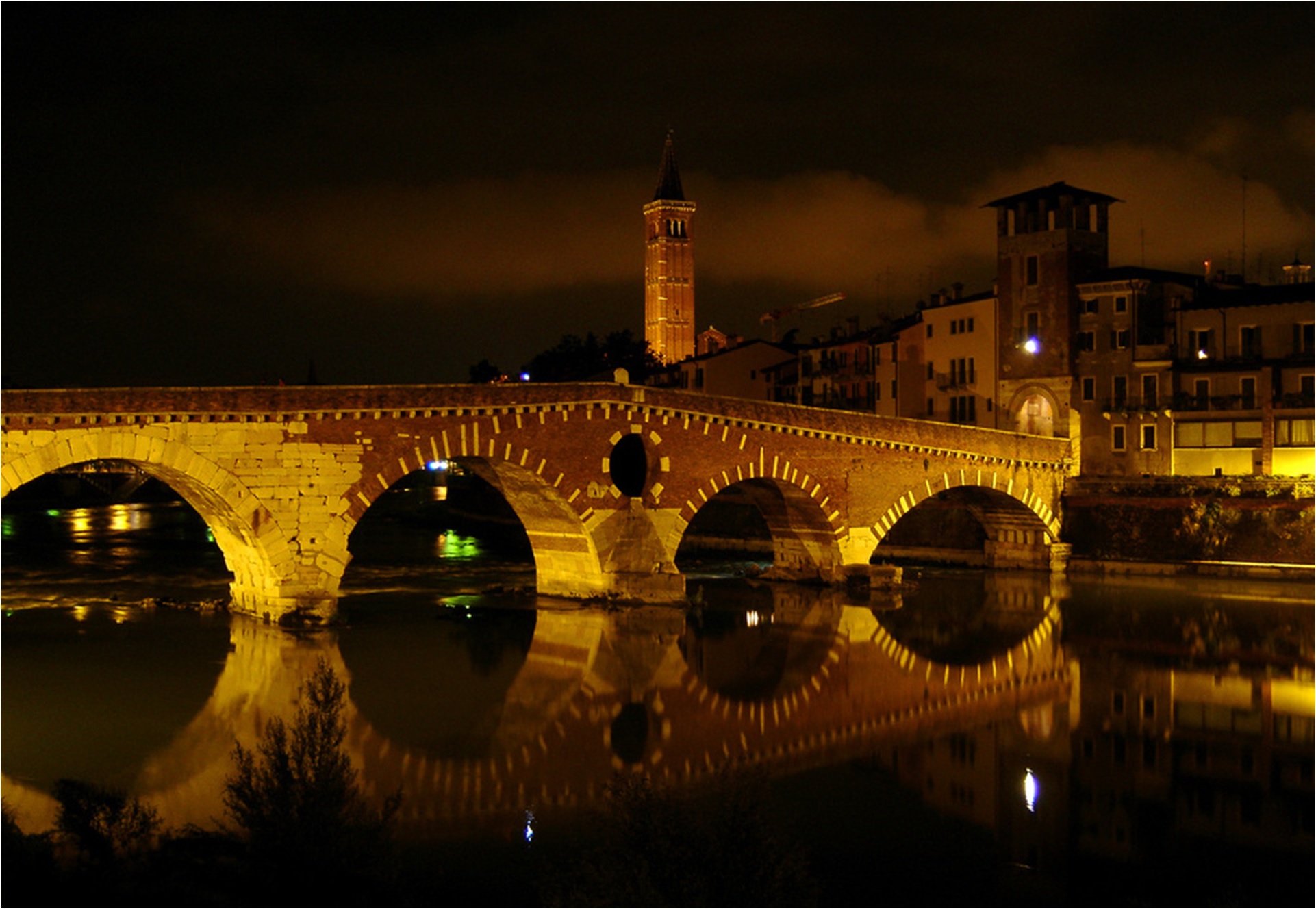

If Venice is the city of romance then Verona is the city of love. The fabled home of Shakespeare's Romeo and Juliet. Verona has taken this tragic story of love to heart and there are a number of wonderful landmarks dotted throughout the city. Verona is ideally designed for walking and the main historical sites are located in the old town on a flat plain surrounded by the River Adige on three sides.
Our walk commences in the Piazza Erbe, the central Piazza in Verona filled with restaurants and markets, and is a hive of activity. The 84 meter high Torre dei Lamberti is a must, the tower offers a 360 ° view to those who choose to climb up it, that is unmatched and unmissable. There is a lift for those with children or unprepared to face the 400 steps to the top. The entrance to the tower is off the Piazza dei Signori through the Arco della Costa in the centre of the northern side of the Piazza.
From the Tower and the Piazza dei Signori we take the short work to the Romeo's house. This is a small castle-looking building is a private home in the heart of Verona. The building date back to the 14th century, with crenelated walls, Gothic door and a Shakespeare inscription, and adds to the romance of Verona.
After visiting the house of Romeo we head to Juliet's house or Giulietta's House. As testified by the coat of arms on the internal arch-way of the court-yard, this house belonged to the “Dal Cappello” or “Cappelletti”. The building, dates back to the 13th century, features the balcony where Romeo promised his beloved Juliet eternal love in Shakespeare’s famous tragedy. Young couples are still very moved by the right of this house and unmarried people touch Juliet’s statue (a kind of good-luck ritual) in the hope of finding the love of their life. The interior of the house can be visited and you can stand on Juliet’s balcony as well as admire the furniture and the beautiful velvet costumes worn by the actors in the Metro Goldwyn Meyer’s colossal “ Romeo and Juliet”.
After the house of Juliet we head off to Juliet's tomb on the way passing by the interesting Chiesa San Fermo or church of San Fermo. Situated at river end of Via Leoni, the chapel is actually two churches in one: Franciscan monks built the 13th-century Gothic church above the original 8th-century Romanesque building. Inside the newer Gothic church, the magnificent timber ceiling and 14th-century frescoes, including some fragments depicting episodes in the life of St Francis are highlights. Stairs from the cloister lead underground to the main chambers of the wonderful Romanesque church below.
Juliet's Tomb is a small, dark crypt beneath the convent of San Francesco al Corso. The tomb includes a red sarcophagus in which Juliet is said to have been buried. In addition to the tomb the museum hosts wonderful frescos of Verona, from the 16th century when Verona was known as the “Urbs Picta” or “Painted city”.
Leaving the romance of Romeo and Juliet behind we head off to enjoy some of Verona's true history with a visit to the magnificent Verona Arena. The amphitheatre is situated in Piazza Bra and was built in the first half of the 1st century A.D. After the colosseum and the Capuan amphitheatre, the Arena is the third largest of its kind in Italy. The Arena is still used today for opera performances as its elliptical shape enhances the acoustic quality and allows seating-space for thousand of spectators. Make sure you take in an opera if you have the chance.
Also in Piazza Bra standing behind the town walls, is the magnificent Palace of the Gran Guardia, with its elegant steps and intimidating facade. The palaces baroque style is a wonderful counterbalance the arena.
Not far from the Palace is the great and most spectacular medieval edifice in Verona the Castelvecchio. Constructed on the banks of the Adige by Cangrande II della Scala in 1354 to defend Verona’s people and also provide an escape-route northwards where his Austrian relatives lived.The museum inside the Castelvecchio includes 29 rooms filled with paintings, sculptures, weapons from 1300 to 1700.
Across the bridge and along the river is the Roman Theatre and Archaeological Museum. The theatre lying in splendid setting (built against the hill-side) was erected towards the end of the 1st century B.C (before the Arena was built) would have been a breathtaking site for people coming into Verona. The archaeological museum of the Roman Theatre houses important artefacts from Verona’s Roman past. As you wander up the hill to the Castel San Pietro you are offered splendid views of the city. On walk up you’ll encounter altars, inscriptions dedicated to the gods, marble decorations and beautiful mosaics from the Roman “Domus” in Verona and its province. During the summer the theatre is a beautiful open space for music shows.
Walking back into the city you cross the Ponte Pietro originally built in the 1st century B.C. Built over a natural ford in the river, the bridge was originally constructed in wood, that was later replaced by white and pink stone bridge. The original roman arches can still be seen from the left bank of the Adige, as can the remnants of the Roman wall which contained the river. The bridge collapsed several times over the ages and was rebuilt in the style of the times: the section on the Adige’s right bank dates back to the Middle Ages, including the additions of towers, the remaining of which was recently restored.
The Journey
Our walk today commences in the central Piazza Erbe, make sure you take the time to climb to the top of Torre dei Lamberti.
Walk north-west on Piazza Erbe towards Via della Costa and turn right onto Via della Costa, continue onto Piazza dei Signori and then onto Via Santa Maria in Chiavica, Turn right onto Via Arche Scaligere and Romeo's House will be on the left
Leaving Romeo's House walk south-east on Via Arche Scaligere towards Piazza Indipendenza and turn right onto Piazza Indipendenza and continue onto Piazza Francesco Viviani. Turn left to stay on Piazza Francesco Viviani and then turn right onto Piazzetta Navona and right again onto Via Crocioni. Turn left onto Via Cappello Giuletta's House will be on the left.
From Giulietta's House walk south-east on Via Cappello for about 160 meters towards Via Stella and continue onto Via Leoni for another 150 meters, then turn right onto Stradone S. Fermo and the Chiesa San Fermo will be on the left.
After spending some time exploring the lower levels of Chiesa San Fermo walk south-west on Stradone S. Fermo towards Via Domenico Frangini for about 280 meters. Continue onto Stradone Scipione Maffei and turn left onto Via S. Pietro Incarnario. Veer slightly right onto Via Ponte Roolo and continue 280 metes along Via del Pontiere. Turn left onto Via Luigi da Porto, Juliet's tomb will be on the right
Juliet's tomb
22. Walk back along Via Luigi da Porto towards Via del Pontiere, and turn right onto Via del Pontiere and walk back the way you cam for about 24o meters. Turn left onto Via Pallone
and continue onto Largo Divisione Pasubio and then onto Via degli Alpini. Turn right onto Piazza Bra and turn left to stay on Piazza Bra.
The Piazza Bra is central to many great sites but the grandest is the Verona Arena. Departing the Piazza walk south-east on Piazza Bra and turn right onto Via degli Alpini and continue onto Via Roma for about 300 meters. Turn left onto Corso Castelvecchio and turn right onto Ponte Scaligero and Castel Veccheio will be on the right. After your visit to the museum, walk north on Ponte Scaligero and across the Ponte Scaligero or Castelvecchio Bridge.
After crossing the Castelvecchio Bridge turn right towards Lungadige Campagnola and walk along the river Adige for 1.6 kilometers. About 120 meters beyond the Ponte Pietra on the opposite side of the Rigaste Redentore you will find the remarkable Roman Theatre and Castel San Pietro.
After your visit to Castel San Pietro you can head back into central Verona by crossing the Ponte Pietra and heading left on to Via Ponte Pietra and then veering right and continuing onto Via Achille Forte for about 250 meters. Turn right onto Via Rosa and then right Corso Sant'Anastasia for another 60 meters. You will arrive back at Piazza Erbe.
